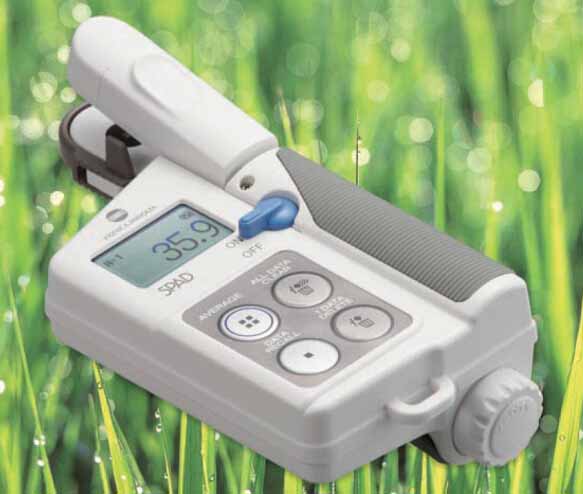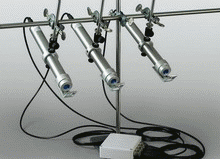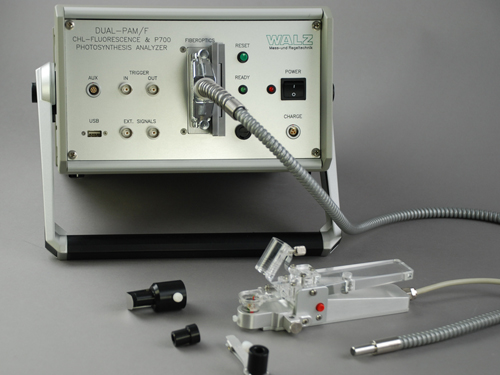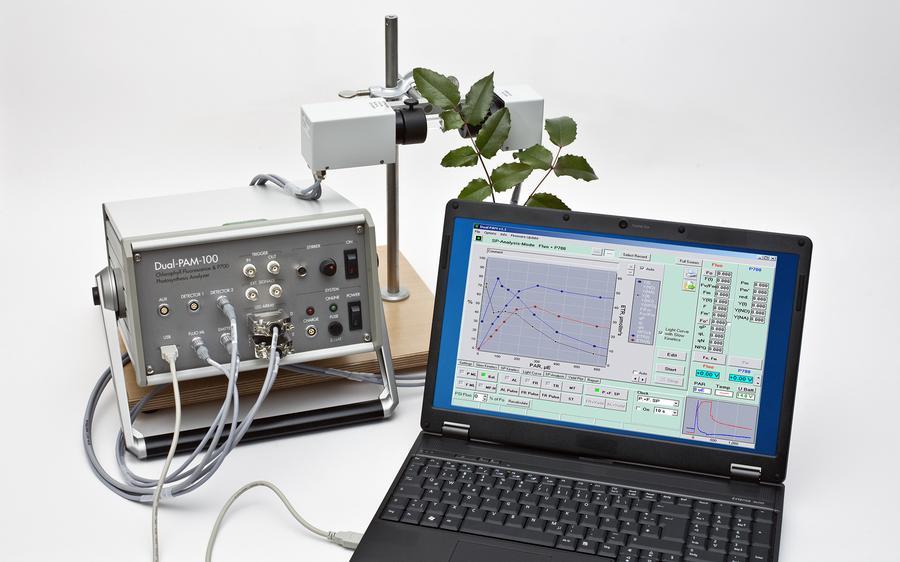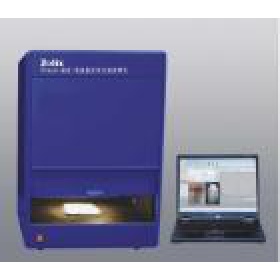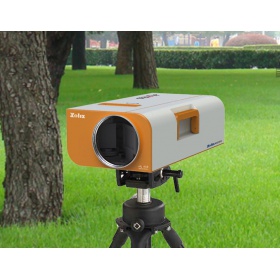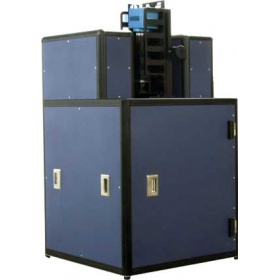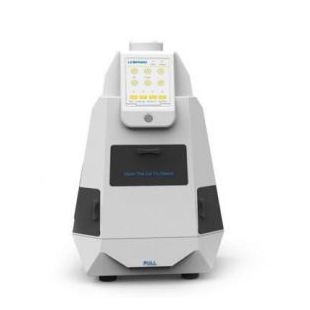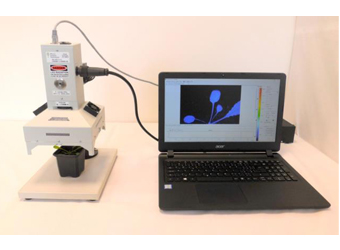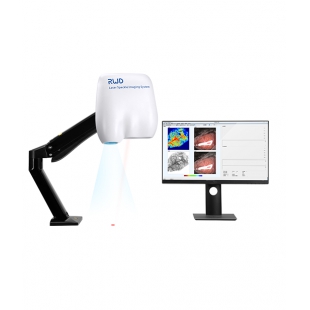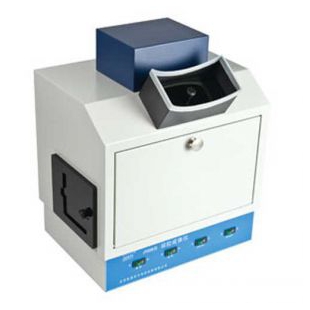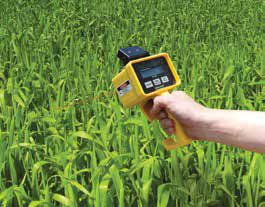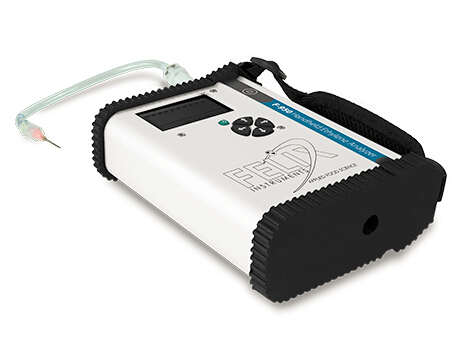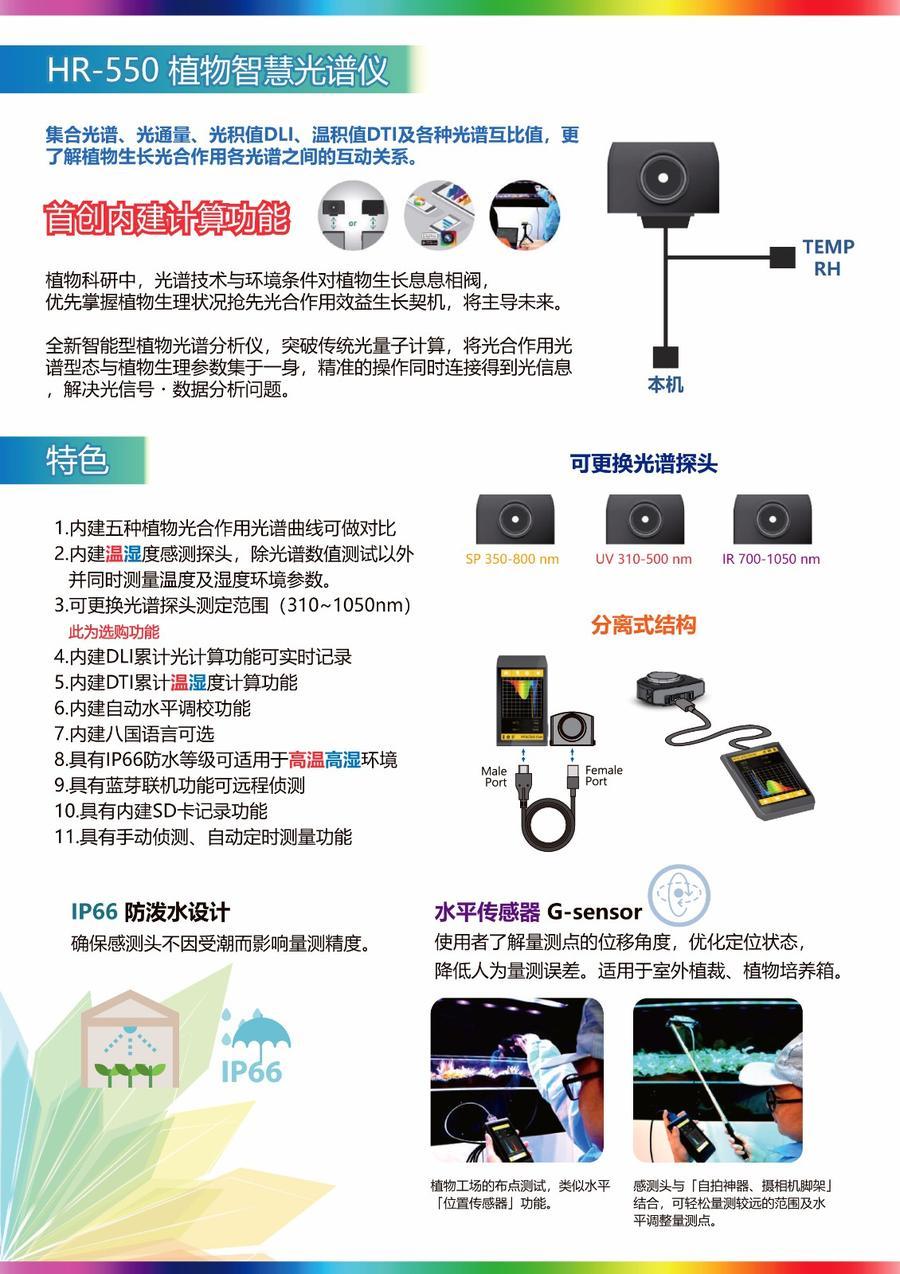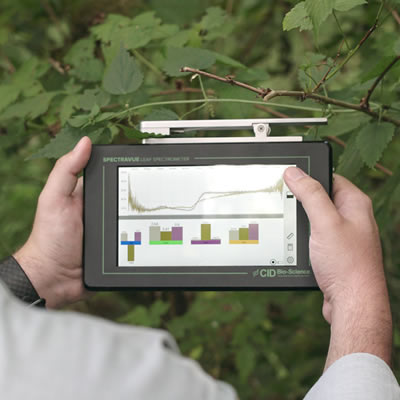-
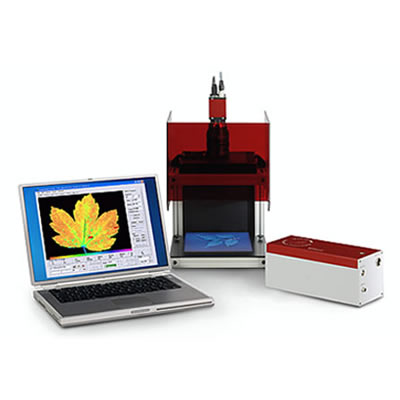
-
叶绿素荧光系统成像仪——PAM-WATCH

- 品牌:德国WALZ
- 型号:
- 产地:德国
- 供应商报价: 面议
-
上海泽泉科技股份有限公司
 更新时间:2024-04-23 15:51:02
更新时间:2024-04-23 15:51:02 -
企业性质生产商
入驻年限第10年
营业执照已审核
- 同类产品植物叶面测量/图像分析(8件)
联系方式:沈先生021-32555118
联系我们时请说明在仪器网(www.yiqi.com)上看到的!
-
为您推荐
- 详细介绍
功能强大、操作简便、文献众多的叶绿素荧光成像系统
突变株快速筛选的强大工具
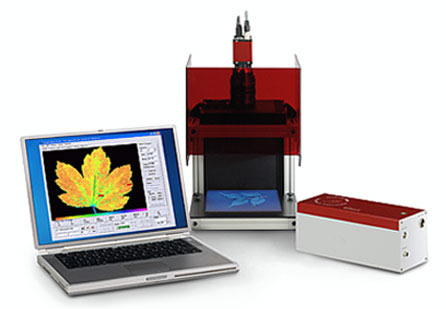
• 标准蓝光版,450 nm,测叶片和真核藻类
• 红光版,620 nm,测蓝藻和真核藻类

主要功能
• 成像功能:对Ft、Fo、Fm、Fv/Fm、F、Fm’、Y(II)、Y(NO)、Y(NPQ)、NPQ、qN、qP、qL、ETR、Abs.、NIR、Red等参数进行成像分析。测定调节性能量耗散Y(NPQ),反映植物光保护能力,测定非调节性能量耗散Y(NO),反映植物光损伤程度。
• 程序测量功能:可程序测量荧光诱导曲线、快速光曲线和暗弛豫,也可手动测量;在测量过程中能自动分析所有荧光参数的变化趋势
• AOI功能:可在测量前或测量后任意选择感兴趣的区域(AOI),程序将自动对选择的AOI的数据进行变化趋势分析,并在报告文件中显示相关AOI的数据。所有报告文件中显示的数据都可导出到EXCEL文件中。
• 成像异质性分析功能:对任意参数任意时间的成像,可在图像上任意选取两点,软件自动对两点间的数据进行横向异质性分析,并可导出到EXCEL文件中。
• 成像数据范围分析功能:对任意参数任意时间的成像,可分析任意两个荧光数值之间有多少个像素点,多少面积(cm2)。
• 突变株筛选功能:可跟据成像结果快速筛选光合、产氢/油、抗逆(抗盐、抗旱、抗病等)等突变株。
• 微藻毒理研究功能:可同时测量96个微藻样品(对照和处理组)的光合活性,软件自动给出处理组样品相对于对照组的光合YZ百分比。
• 吸光系数测量功能:快速测量叶片的吸光系数。吸光系数测量光源: 16个红光(650 nm)和16个近红外(780 nm)LED,用于测量植物叶片或藻类样品PAR吸光系数。
• 监测功能:可实时监控箱内环境状态、机器状态监控区显示目前程序及环境状态
• 环境仿真功能:可程序化多组程序功能 (可多至6组),可个别设定执行天数,可设备单日环境参数(间隔可至分钟),程序化环境参数
• 项目管理功能:预约存多次测量的植物影像及参数,延时(缩时)摄影功能
• 数据分析功能:可导出照片文件,可导出叶绿素荧光参数Ft、Fo、Fm、Fv/Fm、F、Fm’、Y(II)、Y(NO)、Y(NPQ)、NPQ、qN、qP、qL、ETR、Abs.、NIR、Red等
系统设计
• 可单独作为叶绿素荧光仪使用,方便带到野外田间测量和成像;也可配置箱体式结构,容量300L,能同时满足植物培养和叶绿素荧光成像的功能。箱体内设有栽培区,可分2层、3层、4层等,调节高度进行培养和测量。箱体内有特殊消光图层,避免反光造成的测量干扰。
• 系统配置触摸式高清显示屏(24寸),方便操作,支持1670万色彩和FHD高清画质。
• 系统处理器:I7处理器,16G缓存,512固态硬盘SSD,满足快速数据处理和存储要求。
• 供电:室内使用220V,50Hz交流电,荧光仪单独使用时,内置可充电锂电池供电,满足4小时的野外测量
箱体环境控制(光照、温度等)
• 温度环控条件:15-40°C ±5°C(关灯)
• 光照系统:采用四合一LED光盘,白光5000k ±500k、红光660nm±10nm、蓝450nm±10nm、红外光730nm±10nm,光盘面积29×40cm,四种光源可独立自主控制,光质强度可达PPFD ≧700µmols-1m-2@15cm,光照时间控制可程序化设定,设定时间可至1min,可仿真日出至日落光照变化。
• 控制系统:PID微电脑控制,可设定上昼夜循环程序
• 可选配二氧化碳和湿度控制单元
成像技术参数
Maxi探头
• 荧光测量光源: 44个蓝色LED,450 nm,测量光强度0.5 μmol m-2 s-1PAR,ZD光化光强度1900 μmol m-2 s-1PAR,饱和脉冲强度4000 μmol m-2 s-1PAR
• 吸光系数测量光源:16个红光(660 nm)和16个近红外(780 nm)LED,用于测量样品PAR吸光系数。
• 成像面积:工作距离18.5cm,成像面积 10×13 cm;工作距离22.5cm,成像面积11×15cm。
• 光强异质性:测量区域光强异质性小于±7%。
• 测量参数:Ft、Fo、Fm、Fv/Fm、F、Fm’、Y(II)、Y(NO)、Y(NPQ)、NPQ、qN、qP、qL、ETR、Abs.、NIR、Red等。
应用领域
• 光合作用研究:可以在完全相同的条件下同时对大量样品进行成像
• 植物病理学:病斑部位(包括肉眼不可见时)成像以及病斑扩散的时空动力学
• 植物胁迫生 理学:肉眼不可见胁迫损伤的早期检测
• 遗传育种:出苗后大规模快速筛选高光合/抗旱/抗热/抗冻/抗病等植株
• 突变株筛选:快速筛选模式植物的光合突变株、抗逆突变株、产氢微藻突变株等
• 微藻毒理学:不同毒物浓度多个重复的样品一次测完,软件自动计算YZ比率
• 分子生物学:宏观水平上检测样品的绿色荧光蛋白(GFP)荧光
• 其它多种扩展研究
成像参数
Fo, Fm, F, Ft, Fm', Fv/Fm, Y(II), qL, qP, qN, NPQ, Y(NPQ), Y(NO), ETR, Abs, NIR和Red等
突变株的快速筛选
MAXI-IMAGING-PAM特别适合对幼苗、愈伤组织、微藻等进行突变株的快速筛选,适合于与光合突变株、抗逆(抗旱、抗盐、抗病等)突变株、产油/氢突变株等的快速筛选。
国外利用MAXI-IMAGING-PAM筛选突变株的典型客户如拜耳、BASF、孟山都、先正达等大型跨国农业巨头,以及各大农业育种、植物分子生物学等科研单位,例如澳大利亚植物功能基因组中心(阿德雷德大学)、德国尤里希表型植物表型研究中心(Julich Plant Phenotyping Centre)等等。
国内约一半的MAXI-IMAGING-PAM客户在进行突变株快速筛选工作,主要分布于中国科学院、中国农科院和各大高校。

突变株筛选实例一:国内某客户筛选的拟南芥突变株
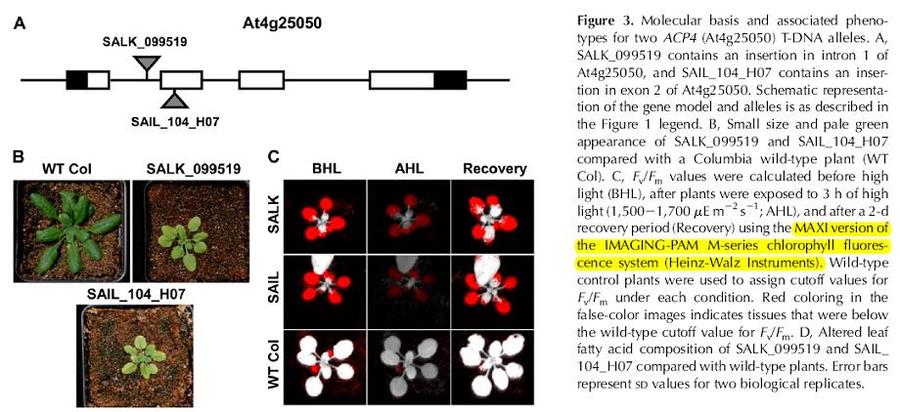
突变株筛选实例二:产油突变株的筛选。Ajjawi et al, 2010, Plant Physiol., 152: 529-540.

突变株筛选实例三:光合突变株的筛选。Armbruster et al., 2010, Plant Cell, 22: 3439-3460.
调制叶绿素荧光成像实例
叶片成像异质性
1)葡萄叶片
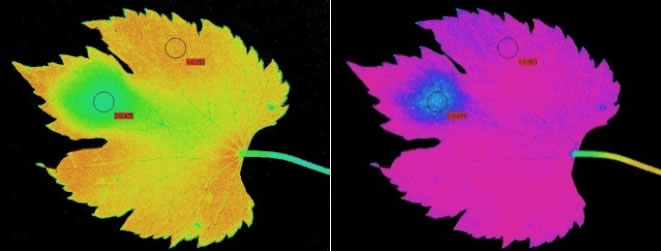
2)荷花叶片
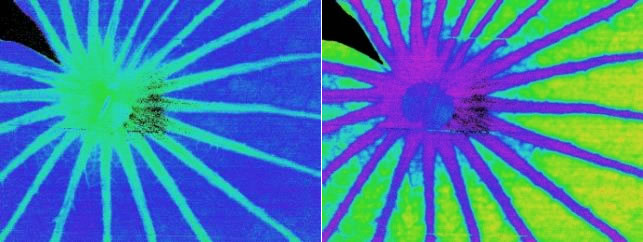
水果的成像
1)草莓的成像
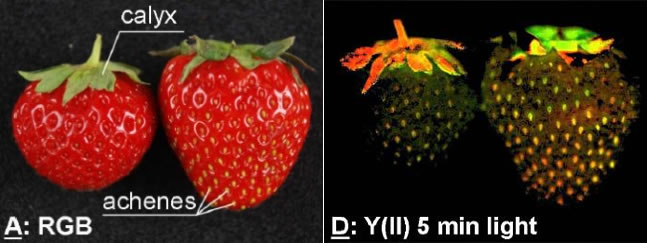
2)猕猴桃的成像
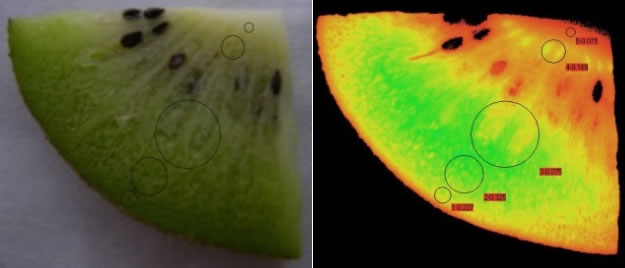
突变株筛选
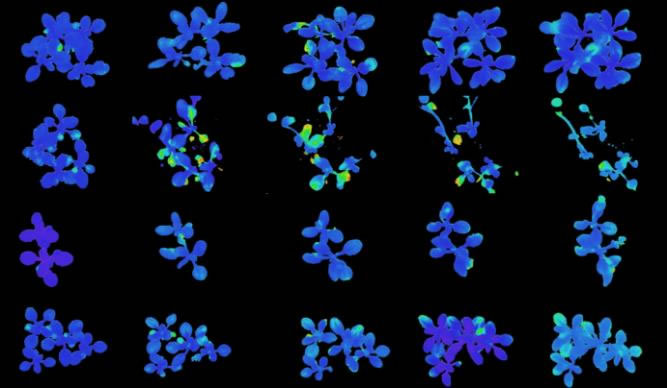
植物病理研究
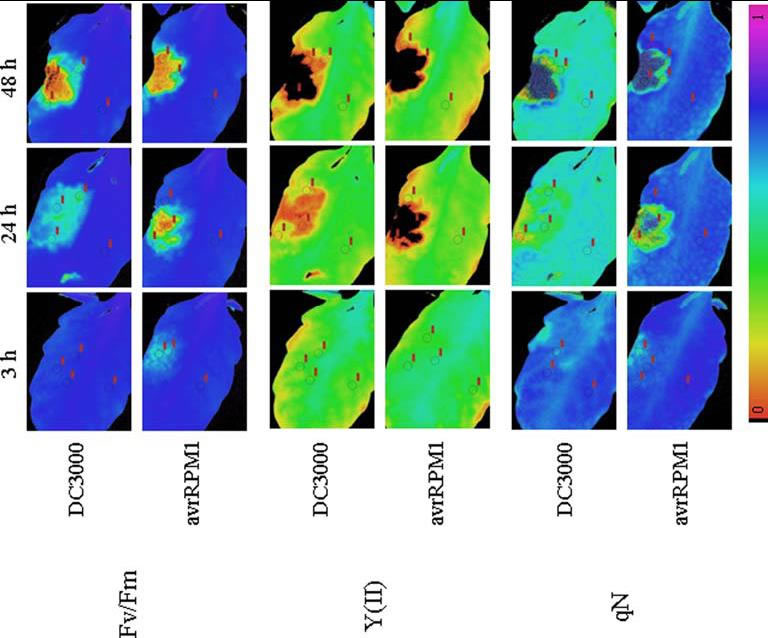
荧光成像与CO2气体交换的同步测量
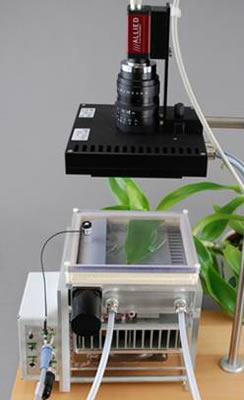
(GFS-3000/IM-MAXI):MAXI-探头与GFS-3000联用,在10 cm x 13 cm的面积上同步测量气体交换与荧光成像。
产地:德国WALZ
代表文献
数据来源:光合作用文献Endnote数据库
原始数据来源:Google Scholar
1. Corral, M. G., et al. (2018). "A herbicide structure‐activity analysis of the antimalarial lead compound MMV007978 against Arabidopsis thaliana." Pest management science.
2. Ohnishi, A., et al. (2018). "Improved photosynthesis in Arabidopsis roots by activation of GATA transcription factors." Photosynthetica: 1-12.
3. Paolacci, S., et al. (2018). "The invasive duckweed Lemna minuta Kunth displays a different light utilisation strategy than native Lemna minor Linnaeus." Aquatic Botany.
4. Phinney, N., et al. (2018). "Rapid resurrection of chlorolichens in humid air: specific thallus mass drives rehydration and reactivation kinetics." Environmental and Experimental Botany.
5. Antonoglou, O., et al. (2018). "Nanobrass CuZn nanoparticles as foliar spray non phytotoxic fungicides." ACS applied materials & interfaces.
6. Borlongan, I. A., et al. (2018). "Photosynthetic activity of two life history stages of Costaria costata (Laminariales, Phaeophyceae) in response to PAR and temperature gradient." Phycologia 57(2): 159-168.
7. Chen, Y.-E., et al. (2018). "Biomonitoring chromium III or VI soluble pollution by moss chlorophyll fluorescence." Chemosphere 194: 220-228.
8. Gawroński, P., et al. (2018). "Plastid ribosome pausing is induced by multiple features and is linked to protein complex assembly." Plant Physiology: pp. 01564.02017.
9. Keilhofer, N., et al. (2018). "Streptomyces AcH 505 triggers production of a salicylic acid analogue in the fungal pathogen Heterobasidion abietinum that enhances infection of Norway spruce seedlings." Antonie van Leeuwenhoek: 1-14.
10. Lan, X.-Y., et al. (2018). "Resistance mechanisms and their difference between the root and leaf of Microsorum pteropus – A novel potential aquatic cadmium hyperaccumulator." Science of The Total Environment 616-617(Supplement C): 480-490.
11. Li, S., et al. (2018). "Glandular trichomes as a barrier against atmospheric oxidative stress: relationships with ozone uptake, leaf damage and emission of LOX products across a diverse set of species." Plant, Cell & Environment.
12. Li, X., et al. (2018). "Freezing stress deteriorates tea quality of new flush by inducing photosynthetic inhibition and oxidative stress in mature leaves." Scientia Horticulturae 230: 155-160.
13. Li, X., et al. (2018). "Melatonin alleviates low PS I‐limited carbon assimilation under elevated CO2 and enhances the cold tolerance of offspring in chlorophyll b‐deficient mutant wheat." Journal of pineal research 64(1).
14. Li, X., et al. (2018). "Exogenous Melatonin Alleviates Cold Stress by Promoting Antioxidant Defense and Redox Homeostasis in Camellia sinensis L." Molecules 23(1): 165.
15. Pan, J., et al. (2018). "Overexpression of microRNA408 enhances photosynthesis, growth, and seed yield in diverse plants." Journal of Integrative Plant Biology.
16. Pieczywek, P., et al. (2018). "Early detection of fungal infection of stored apple fruit with optical sensors–Comparison of biospeckle, hyperspectral imaging and chlorophyll fluorescence." Food Control 85: 327-338.
17. Racheva, R., et al. (2018). "In situ continuous countercurrent cloud point extraction of microalgae cultures." Separation and Purification Technology 190: 268-277.
18. Schroeder, R. Y., et al. (2018). "The ribokinases of Arabidopsis thaliana and Saccharomyces cerevisiae are required for ribose recycling from nucleotide catabolism, which in plants is not essential to survive prolonged dark stress." New Phytologist 217(1): 233-244.
19. Tajti, J., et al. (2018). "Comparative study on the effects of putrescine and spermidine pre-treatment on cadmium stress in wheat." Ecotoxicology and Environmental Safety 148: 546-554.
20. Wang, Q., et al. (2018). "Molecular cloning and characterization of the glutathione reductase gene from Stipa purpurea." Biochemical and biophysical research communications 495(2): 1851-1857.
21. Xia, Y., et al. (2018). "Effect of ionic liquids with different cations and anions on photosystem and cell structure of Scenedesmus obliquus." Chemosphere 195: 437-447.
22. Ahammed, G. J., et al. (2017). "Tomato photorespiratory glycolate oxidase‐derived H2O2 production contributes to basal defense against Pseudomonas syringae." Plant, Cell & Environment.
23. Allewaert, C. C., et al. (2017). "Intraspecific trait variation affecting astaxanthin productivity in two Haematococcus (Chlorophyceae) species." Algal Research 21: 191-202.
24. Álvarez-Iglesias, L., et al. (2017). "A simple, fast and accurate screening method to estimate maize (Zea mays L) tolerance to drought at early stages." Maydica 62(2017): M34.
25. Araniti, F., et al. (2017). "Allelopatic Potential of Dittrichia viscosa (L.) W. Greuter Mediated by VOCs: A Physiological and Metabolomic Approach." PLoS ONE 12(1): e0170161.
26. Aucique-Pérez, C. E., et al. (2017). "Photosynthesis impairments and excitation energy dissipation on wheat plants supplied with silicon and infected with Pyricularia oryzae." Plant Physiology and Biochemistry.
27. Bellworthy, J. and M. Fine (2017). "Beyond peak summer temperatures, branching corals in the Gulf of Aqaba are resilient to thermal stress but sensitive to high light." Coral Reefs: 1-12.
28. Bender-Champ, D., et al. (2017). "Effects of elevated nutrients and CO 2 emission scenarios on three coral reef macroalgae." Harmful Algae 65: 40-51.
29. Bresson, J., et al. (2017). "A guideline for leaf senescence analyses: from quantification to physiological and molecular investigations." Journal of Experimental Botany.
30. Brugger, A., et al. (2017). "Impact of compatible and incompatible barley—Blumeria graminis f.sp. hordei interactions on chlorophyll fluorescence parameters." Journal of Plant Diseases and Protection.
31. Cai, S. Y., et al. (2017). "HsfA1a upregulates melatonin biosynthesis to confer cadmium tolerance in tomato plants." Journal of pineal research.
32. Cantabella, D., et al. (2017). "Salt-tolerance mechanisms induced in Stevia rebaudiana Bertoni: Effects on mineral nutrition, antioxidative metabolism and steviol glycoside content." Plant Physiology and Biochemistry.
33. Chakravarti, L. J., et al. (2017). "Rapid thermal adaptation in photosymbionts of reef‐building corals." Global change biology.
34. Chen, Y.-E., et al. (2017). "Comparison of Photosynthetic Characteristics and Antioxidant Systems in Different Wheat Strains." Journal of Plant Growth Regulation: 1-13.
35. Cheng, T., et al. (2017). "Hydrogen sulfide enhances poplar tolerance to high-temperature stress by increasing S-nitrosoglutathione reductase (GSNOR) activity and reducing reactive oxygen/nitrogen damage." Plant Growth Regulation.
36. Coffey, A., et al. (2017). "The UVB photoreceptor UVR8 mediates accumulation of UV‐absorbing pigments, but not changes in plant morphology, under outdoor conditions." Plant, Cell & Environment.
37. Corral, M. G., et al. (2017). "Exploiting the evolutionary relationship between malarial parasites and plants to develop new herbicides." Angewandte Chemie.
38. Csepregi, K., et al. (2017). "Developmental age and UV-B exposure co-determine antioxidant capacity and flavonol accumulation in Arabidopsis leaves." Environmental and Experimental Botany.
39. Cunning, R., et al. (2017). "Symbiont shuffling linked to differential photochemical dynamics of Symbiodinium in three Caribbean reef corals." Coral Reefs.
40. de Lima, D. A., et al. (2017). "Morphoanatomical and physiological changes in Bauhinia variegata L. as indicators of herbicide diuron action." Ecotoxicology and Environmental Safety 141: 242-250.
41. Di Baccio, D., et al. (2017). "Response of Lemna gibba L. to high and environmentally relevant concentrations of ibuprofen: Removal, metabolism and morpho-physiological traits for biomonitoring of emerging contaminants." Science of The Total Environment.
42. Domínguez-Martín, M. A., et al. (2017). "Quantitative Proteomics Shows Extensive Remodeling Induced by Nitrogen Limitation in Prochlorococcus marinus SS120." mSystems 2(3): e00008-00017.
43. Du, G., et al. (2017). "Behavioral and physiological photoresponses to light intensity by intertidal microphytobenthos." Chinese Journal of Oceanology and Limnology: 1-12.
44. Fang, J. K., et al. (2017). "Symbiotic plasticity of Symbiodinium in a common excavating sponge." Marine Biology 164(5): 104.
45. Fittschen, U., et al. (2017). "A new micro X‐ray fluorescence spectrometer for in vivo elemental analysis in plants." X‐Ray Spectrometry.
46. Frankenbach, S. and J. Serôdio (2017). "One pulse, one light curve: Fast characterization of the light response of microphytobenthos biofilms using chlorophyll fluorescence." Limnology and Oceanography: Methods.
47. Gardner, S. G., et al. (2017). "A multi-trait systems approach reveals a response cascade to bleaching in corals." BMC biology 15(1): 117.
48. Gardner, S. G., et al. (2017). "Reactive oxygen species (ROS) and dimethylated sulphur compounds in coral explants under acute thermal stress." Journal of Experimental Biology: jeb. 153049.
49. Gauslaa, Y., et al. (2017). "Functional traits prolonging photosynthetically active periods in epiphytic cephalolichens during desiccation." Environmental and Experimental Botany.
50. Hackett, J. B., et al. (2017). "An Organelle RNA Recognition Motif Protein Is Required for Photosystem II Subunit psbF Transcript Editing." Plant Physiology 173(4): 2278.
51. Harre, N. T., et al. (2017). "Distribution of Herbicide-Resistant Giant Ragweed (Ambrosia trifida) in Indiana and Characterization of Distinct Glyphosate-Resistant Biotypes." Weed Science: 1-11.
52. He, J., et al. (2017). "Photosynthetic acclimation of Grammatophyllum speciosum to growth irradiance under natural conditions in Singapore." Botanical Studies 58(1): 58.
53. Hsieh, W. Y., et al. (2017). "The Arabidopsis thiamin deficient mutant pale green1 lacks thiamin monophosphate phosphatase of the vitamin B1 biosynthesis pathway." The Plant Journal.
54. Hu, L., et al. (2017). "Appropriate NH4+: NO3− ratio improves low light tolerance of mini Chinese cabbage seedlings." BMC Plant Biology 17(1): 22.
55. Hu, W., et al. (2017). "Arbuscular mycorrhizas influence Lycium barbarum tolerance of water stress in a hot environment." Mycorrhiza: 1-13.
56. Humanes, A., et al. (2017). "Effects of suspended sediments and nutrient enrichment on juvenile corals." Marine pollution bulletin.
57. Jiao, Y., et al. (2017). "Effects of phosphorus stress on the photosynthetic and physiological characteristics of Chlorella vulgaris based on chlorophyll fluorescence and flow cytometric analysis." Ecological Indicators 78: 131-141.



